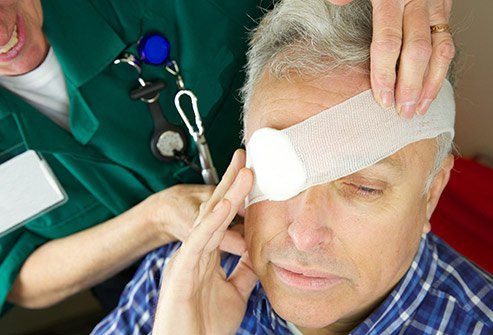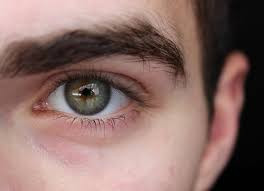Definition
A macular hole is a hole or defect in the macula resulting from the separation of nerve cells within the macula. The eye comprises three primary layers, they are the retina, choroid, and sclera. Visual images are focused by the eye's anterior structures (lens, cornea) onto the retina. The retina contains specialized nerve cells responsible for receiving light and processing visual stimuli, which are then transmitted to the brain for interpretation, so humans can see and know what objects they see. The macula is the retina's most light-sensitive region.
Under certain conditions, nerve cells in the macula can separate, forming a hole, which can impair vision.
The prevalence of macular hole varies globally. In the United States, it is 3.3 cases per 1,000 people over the age of 55, while in India, it is 0.17% with an average age of 67. The Beijing Eye Study reported a prevalence of 1.6 per 1,000 elderly individuals in China, with a higher incidence in women.
Causes
Macular hole predominantly occurs in individuals over 55 and are more frequently observed in women. The primary cause is often unknown and occurs spontaneously without specific indicators, making prevention challenging. If a macular hole develops in one eye, there is a 5-15% risk of macular hole occurrence in the other eye. Hypotheses for macular hole formation include vitreous traction, where the vitreous fluid liquefies with age and pulls on the retina, potentially causing tears leading to macular hole. Scar tissue on the retina may also induce similar traction and tears.
Eye injuries, such as a head blow, can indirectly affect the macula, leading to tears. This can occur due to its thinness and sensitivity to impact.
Risk Factor
Several conditions increase the risks of macular hole, including:
- A history of retinal tears (retinal detachment)
- Diabetes or diabetic retinopathy
- High myopia
- Eye inflammation (uveitis)
- Retinal vein occlusion
- Family history of macular hole
Symptoms
The primary symptom of a macular hole is decreased central visual acuity. Other symptoms may include:
- Blurred vision
- Distorted vision, where straight lines appear wavy
- Black spots in vision
- Inability to see detailed images despite close positioning
Diagnosis
Diagnosis involves a symptom inquiry by the doctor. Early symptoms often include difficulty seeing the central part of the vision, known as metamorphopsia, noticeable during activities like reading or driving. Initial changes are usually mild and gradual, and significant damage may be present before detection. Some individuals may be asymptomatic, with macular hole discovered incidentally during routine eye exams.
A physical examination using an ophthalmoscope or slit lamp will be conducted to identify the macular hole and assess its size, location, and stage. Visual acuity tests will also be performed.
Optical coherence tomography (OCT) is a common diagnostic tool for macular hole, providing detailed images of retinal and macular layers, offering more information than ophthalmoscopic or slit lamp examinations. OCT is quick, non-invasive, and can distinguish macular hole from other conditions with similar symptoms.
Management
The most consistently effective treatment for macular hole is surgical intervention. Eye drops and glasses do not repair macular tears. Some patients may opt against surgery if their vision issues are not significantly bothersome; this decision should be made in consultation with an ophthalmologist.
The surgical procedure for macular hole is known as vitrectomy. The success rate of this surgery is approximately 90%, although there are inherent risks, including the possibility that vision may not fully recover post-surgery.
A vitrectomy typically lasts about an hour under the supervision of an experienced surgeon. Preoperative preparations include sedation and the application of eye drops to dilate the pupils. During the procedure, the surgeon removes the vitreous gel and replaces it with a special gas bubble that presses on the macula, facilitating hole closure. Post-surgery, air travel is restricted for a period depending on the type of gas used. Sutures placed during the surgery dissolve within six weeks, and an eye patch is worn for one day postoperatively.
Post-surgery, patients may experience discomfort, grittiness, itchiness, redness, swelling, and temporary vision impairment, which are normal for up to 7-14 days. Patients should avoid rubbing their eyes and use prescribed eye drops to manage inflammation and prevent infection. Paracetamol can be taken for pain relief. The overall recovery period spans 2-6 weeks, with gradual vision improvement over several months.
A crucial aspect of postoperative care involves maintaining a specific posture, especially if a gas or silicone bubble is inserted. Patients are advised to keep their face downwards for seven days to ensure proper pressure on the macula.
A follow-up appointment with their ophthalmologist is scheduled two weeks post-surgery.
Complications
A macular hole can generally be successfully treated with surgery, with 90-95% of patients experiencing improvement. However, adherence to postoperative instructions, particularly maintaining the prescribed head-down position, is critical. Visual acuity outcomes vary, and patients should discuss expectations with their eye doctor.
Potential complications from surgery include retinal detachment, iatrogenic retinal tears, enlargement of the macular hole, macular toxicity, and increased intraocular pressure. Medication can manage increased eye pressure.
Additionally, cataract formation post-surgery necessitates follow-up examinations.
Prevention
There are no specific preventive measures for macular holes. Regular eye examinations are recommended for individuals over 55 and those with risk factors such as high myopia, a history of head or eye injury, and diabetes.
When to See a Doctor?
Immediate medical attention is advised if the symptoms of macular holes occur. Post-vitrectomy, urgent consultation is necessary if severe pain, sudden vision loss, or significant redness develops.
Looking for more information about other diseases? Click here!
- dr Nadia Opmalina
Boyd K. (2021). What is a Macular Hole? What causes macular hole?. AAO. Retrieved from: https://www.aao.org/eye-health/diseases/what-is-macular-hole
Thompson JT. (2016). Macular Hole. The Foundation American Society of Retina Specialists. Retrieved from: https://www.asrs.org/patients/retinal-diseases/4/macular-hole
Cleveland Clinic. (2019). Macular Hole. Cleveland Clinic. Retrieved from: https://my.clevelandclinic.org/health/diseases/14208-macular-hole
Theng K. (2020). Macular Hole. Medscape. Retrieved from: https://emedicine.medscape.com/article/1224320-overview#a4
Moorfields Eye Hospital NHS UK. (2021). Macular Hole–Patient Information Leaflets. Moorfields NHS UK. Retrieved from: https://www.moorfields.nhs.uk/condition/macular-hole











